What the Media’s Most Powerful Execs Were Paid in 2020: Did Pandemic Pay Cuts Have an Impact?

Do media barons believe in shared sacrifice? When the COVID-19 pandemic hit in 2020, several CEOs made headlines by voluntarily cutting their take-home pay or forgoing salaries. After all, the global health crisis had closed movie theaters and theme parks and brought film and television production to a standstill, forcing companies to lay off or furlough thousands of workers. “Everything stopped. Everything closed down,” says Bertha Masuda, a partner in Compensation Advisory Partners. “I don’t think there has ever been an event for these businesses as catastrophic as COVID.”
But the belts that companies tightened still seemed to stretch a lot with bonuses and perks that ensured media CEOs will continue to rank among the nation’s highest-paid executives.
“It was largely cosmetic,” says Rosanna Landis Weaver, program manager of the CEO pay program at shareholder advocacy group As You Sow. “Most of these companies issued huge press releases announcing they were doing something good by getting rid of their CEO salaries. They didn’t make big announcements when those salaries returned.”
Now, with the release of annual reports and proxies, we see how little media chiefs gave up at a time when total employment at AT&T, Comcast, Discovery, Disney, Fox, Lionsgate, Netflix and ViacomCBS dropped by 57,153 — an 8% decline over the previous year.
But we can already see that the absence of special deal-related bonuses, not shared sacrifice or even falling stock prices, accounts for much of the 12% drop in average compensation, to $28.9 million, for the chiefs of AT&T, Comcast, Disney, Fox, Lionsgate, Netflix and ViacomCBS — the companies, among the ones we track, that have released their 2020 proxy reports disclosing compensation for top executives. Discovery has yet to file its 2020 report.
“Some people took salary cuts, but it hasn’t affected overall compensation,” says Charles M. Elson, director of the John L. Weinberg Center for Corporate Governance at the University of Delaware. “Most of what they lost in salary will be made up for in long-term incentives.”
Looked at another way, a typical employee would have to work 306 years to match what the CEOs averaged in 2020 alone based on each company’s calculation of median worker pay. That’s an improvement from 416 years in 2019, but remains a far higher ratio than you see at most top U.S. corporations.
The gross-pay disparities tell us how highly the leaders of the nation’s top news and entertainment companies regard themselves. But to appreciate the breadth of their sense of entitlement, you have to look — as we do here — at the fantastic justifications they offer for pocketing so much wealth even during an emergency that devastated employees and shareholders.
Media companies usually say that their CEOs earn their high pay by meeting the high goals their boards set. But as you’ll see in some of the profiles below, directors frequently move the goal posts when it suits them.
They also rarely tie compensation to the CEO’s treatment of workers, customers, communities, the environment and ordinary shareholders. To see those disparities, we once again include assessments of each company’s strengths and weaknesses from JUST Capital — a nonpartisan nonprofit that advocates stakeholder capitalism.

DISNEY
Robert Iger, Executive Chairman
2020 Iger compensation: $21.0M/-55.7%
Robert Chapek, CEO
2020 Chapek compensation: $14.2M/NA
Media Employee Compensation: $51,073
Iger/Chapek Pay Ratio to Media Employee: 412/293
2020 Total Shareholder Return: -5.4%
Board: 6 Men/4 Women
Average Age of Board Members: 61
Disney’s board responded to two irresistible forces last year when it decided how much to pay top execs.
One was the investor revulsion over Robert Iger’s gargantuan compensation. Owners of more than half of Disney’s shares opposed the board’s outlays in a 2018 advisory vote, and just 53% supported in 2020.
Robert Chapek, who was named CEO in February 2020, won’t be as generously compensated. Being “responsive to those [shareholder] concerns,” the latest proxy says, Chapek’s package is “considerably below” what Iger made. Shareholders welcomed the change, with 68% approving the current pay packages at the company’s recent annual meeting.
Chapek made $14.2 million last year. If the contract he signed on becoming CEO was annualized, then he would have made nearly $15 million — meaning the average employee would have to work 293 years to match his.
The board didn’t reduce Iger’s compensation agreement when he became executive chairman, with plans to leave at the end of 2021.
Still, he was pinched by a second irresistible force: the COVID pandemic, which the board says “took a substantial toll on our businesses,” resulting in a $2.8 billion net loss in continuing operations, down from a $10.4 billion net profit in 2019.
The board jettisoned performance bonuses for all leaders even though the proxy says that “there were other performance factors that would have supported a bonus.”
That decision hit Iger hard: He made $21.8 million from his bonus in 2019 — 80% more than his target — for what the board called “a year of extraordinary accomplishment” with the acquisition of Fox’s studio and other entertainment assets. Directors also gave him a $2.4 million grant for the Fox deal.
Iger was still Disney’s highest-paid executive, by far, in 2020. It would take the average Disney employee 412 years to match what he earned that year alone, according to the company’s calculation of average employee pay.
Disney’s history of paying executives so extravagantly still sticks in some people’s craw. Sen. Elizabeth Warren said in October that high rewards for executives and stockholders “weakened Disney’s financial cushion and ability to retain and pay its front-line workers amid the pandemic.” The company pushed back in a letter, calling the senator’s remarks “ill-considered and misleading.”
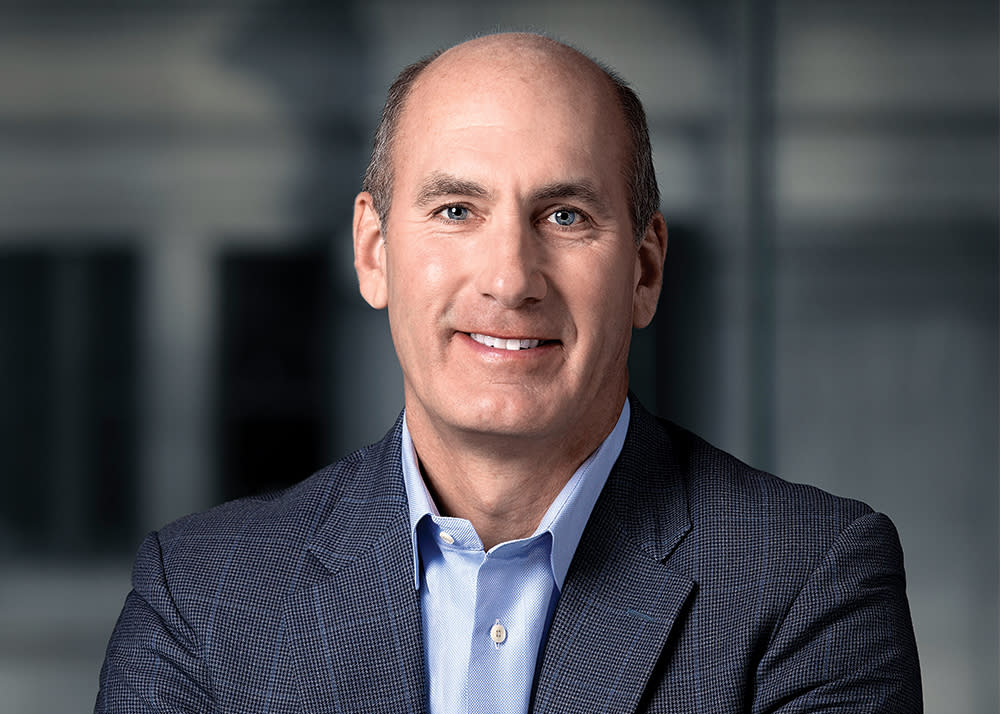
AT&T
Randall Stephenson, Executive Chairman
2020 Stephenson compensation: $29.2M/-9%
John Stankey, CEO, President
2020 Stankey compensation: $21.0M/-6.5%
Jason Kilar, CEO – WarnerMedia
2020 Kilar compensation: $52.2M/NA
Media Employee Compensation: $89,399
Stephenson/Stankey/Kilar Pay Ratio to Media Employee: 326/227/584
2020 Total Shareholder Return: -22.1%
Board: 9 Men/3 Women
Average Age of Board Members: 63
It must have been hard to persuade Jason Kilar to bring what AT&T’s latest proxy calls his “unique expertise” to WarnerMedia, where he has overseen its news and entertainment assets since last May. How else can you explain the deal that valued his 2020 compensation at a cool $52.2 million — about the same amount the telco paid Randall Stephenson, who moved from CEO to executive chairman in July, and his successor, John Stankey, combined?
Directors put up $48 million worth of restricted stock units — equal to more than 1.6 million shares — to “attract Mr. Kilar and to provide an incentive for him to create stockholder value and to remain” with AT&T, the proxy says. Although the total value is in the 2020 proxy, Kilar will receive a quarter of the shares each year over four years. All told, AT&T figures his annual compensation will hover around $17 million.
Fortunately for Kilar, the board pegged the number of units he’ll receive to equal $48 million on the value of AT&T’s COVID-depressed stock price on March 31, 2020. That gives him the opportunity to make much more than $48 million if the telco’s shares appreciate. The units also entitle him to collect quarterly cash dividends.
In addition to that award, directors gave him a $2.5 million annual base salary and short-term incentive payment targeted at $2.5 million. Those were prorated for the eight months he worked at AT&T in 2020.
After the pandemic hit, the board argued that its 2020 goals to determine executive bonuses were “no longer relevant.” Directors decided that — except for Stankey and Stephenson — it would “compensate the executive officers as a team,” giving them 75% of the target awards.
Stankey asked to have his salary and short-term bonus for the last six months of 2020, the period when he was CEO, cut by 50%. Stephenson gave up all his salary for the second half of 2020 and limited his short-term award to half of the 75% that AT&T offered the top executives.
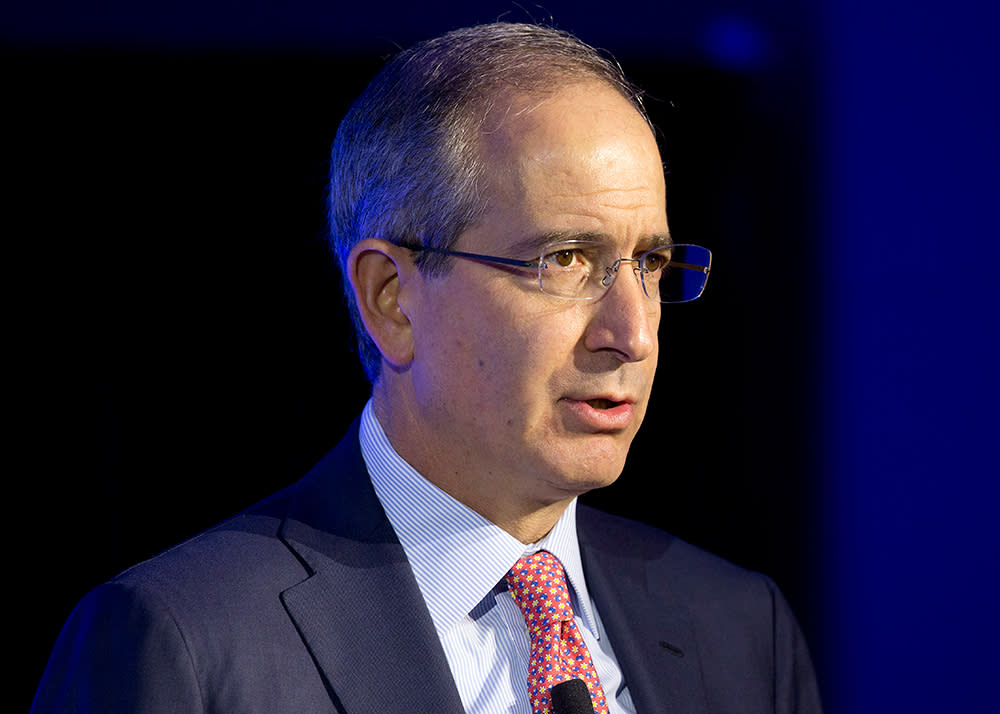
COMCAST
Brian Roberts, CEO
2020 Roberts compensation: $32.7M/-11%
Jeff Shell, CEO – NBCUniversal
2020 Shell compensation: $16.5M/NA
Media Employee Compensation: $86,206
Roberts/Shell Pay Ratio to Media Employee: 380/192
2020 Total Shareholder Return: +19%
Board: 7 Men/3 Women
Average Age of Board Members: 64
Here’s some surprising news in Comcast’s latest proxy: The COVID crisis ended in September.
Yes, the death rates continued to soar through January. But Comcast said last year that CEO Brian Roberts and other executives would donate their entire salaries to COVID relief efforts from April 2020 “through the duration of this situation.” But they started keeping their salaries after six months.
Roberts gave up $1.7 million for COVID. He also lost $2.2 million from the drop in his cash bonus as Comcast fell short of some financial goals. He made $7.7 million in his bonus, which amounts to 75% of his target versus the more than 100% the board awarded him in 2019. The board credited Roberts for “successfully leading the company during this unprecedented period.”
Roberts also lost nearly $4.7 million from Comcast’s decision to slash the amounts it kicked in to one of the company’s sweetest and most controversial perks: the deferred compensation fund.
Many shareholders complained that the benefit, which guaranteed 9% a year in interest, was too generous and not tied to Comcast’s performance. This past March the company ended the guaranteed return in a fund where Roberts has parked about $119 million. The annual interest payments now come from more conventional investment funds.
Directors call their decision an “enhancement” to the compensation plan. That’s a change from last year, when they defended it as “a unique compensation feature” that attracts and retains talent.
Maybe money isn’t everything: Comcast seems happy enough with Jeff Shell, who last year replaced Steve Burke as CEO of NBCUniversal — and saved the company a bundle. Burke often made more than Roberts, including in 2019, when the NBCU chief took in $42.6 million.
By contrast, Shell made $16.5 million in 2020, not including the $1.3 million he gave up for COVID relief. Directors credit him for having “successfully launched Peacock” and offering new Universal Studios movies to home viewers “as more consumers shift to viewing streaming content.”
Comcast reports that women account for 36% of all employees and 40% of those ranked at or above vice president. People of color make up 44% of the workforce and 22% of those at or above VP.
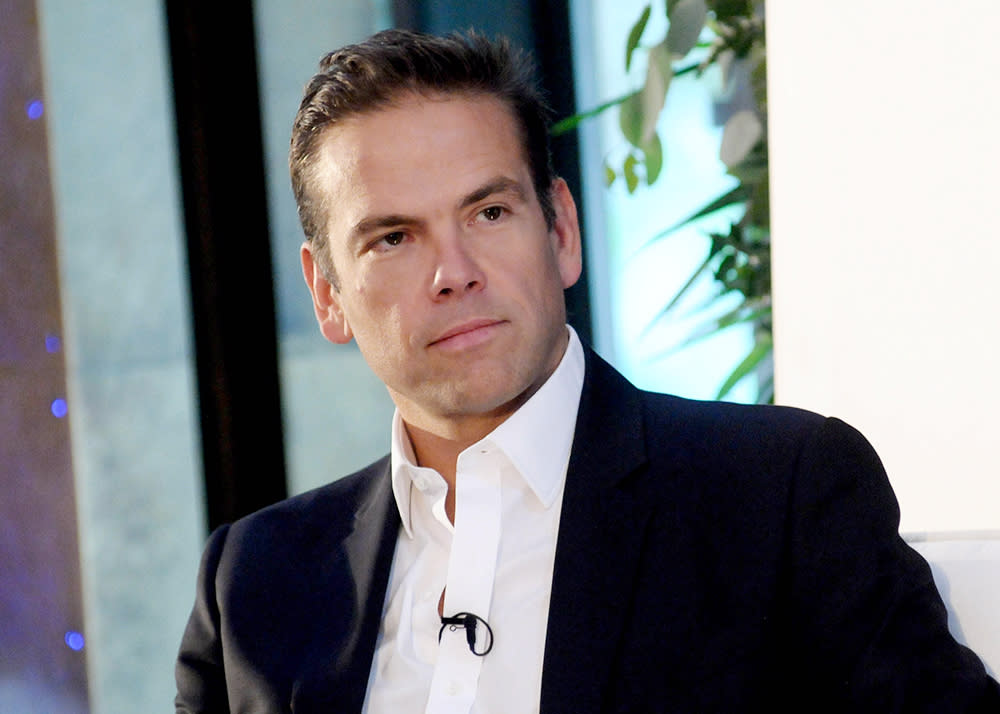
FOX
Rupert Murdoch, Executive Chairman
2020 compensation: $34.0M/-19.4%
Lachlan Murdoch, CEO
2020 compensation: $29.2M/-30.8%
Media Employee Compensation: $81,307
Rupert Murdoch/Lachlan Murdoch Pay Ratio to Media Employee: 418/359
2020 Total Shareholder Return: -24.4%
Board: 6 Men/1 Woman
Average Age of Board Members: 62
Fox CEO Lachlan Murdoch sent a swell-sounding message to employees last April as the seriousness of the COVID pandemic became clear. He and his father — executive chairman Rupert Murdoch — and other execs would forgo their salaries from May to September “to continue providing your salary and benefits throughout this crisis.”
How much did the two Murdochs sacrifice? The proxy for the fiscal year that ended in June tells us 2% was subtracted: $500,000 and $800,000 respectively. (Salary losses for July to September will appear in next year’s report.)
They more than made up for those losses with “annual incentive compensation” that the board determined beat their targets by more than 40%. These awards are tied to the company’s financial performance, so the pair were helped by Fox News’ election-year ratings and ad rate hikes.
Directors appear unmoved by multiple studies that concluded misinformation on Fox News weakened efforts to slow COVID. The network provided the public with “information to better understand the COVID-19 pandemic and its impact on a national and local level,” the proxy says.
To be sure, the two Murdochs made a lot less in 2020 than they did the year before. But that’s mostly due to the absence of rewards for negotiating Disney’s $71.3 billion acquisition in 2019 of Fox’s movie studio and other entertainment assets.
If you compare 2020 with 2017 — when they were executive chairmen of 21st Century Fox — Rupert’s tally is 16% larger and Lachlan’s is up 41%, even though the current company is much smaller than its predecessor.
Directors didn’t change the overall structure of the executives’ pay to account for COVID. But they did move the goal posts to compute long-term incentive stock awards beginning in 2021. Rather than calculate the awards for a single year’s performance, they will look at results over a three-year period.
The board has “little expectation that the performance goals previously established for the fiscal 2020-2022 performance period will be achieved,” the proxy says.
The body, comprising one woman and six men, says it believes diversity “is fundamentally woven in the fabric of the Company.”
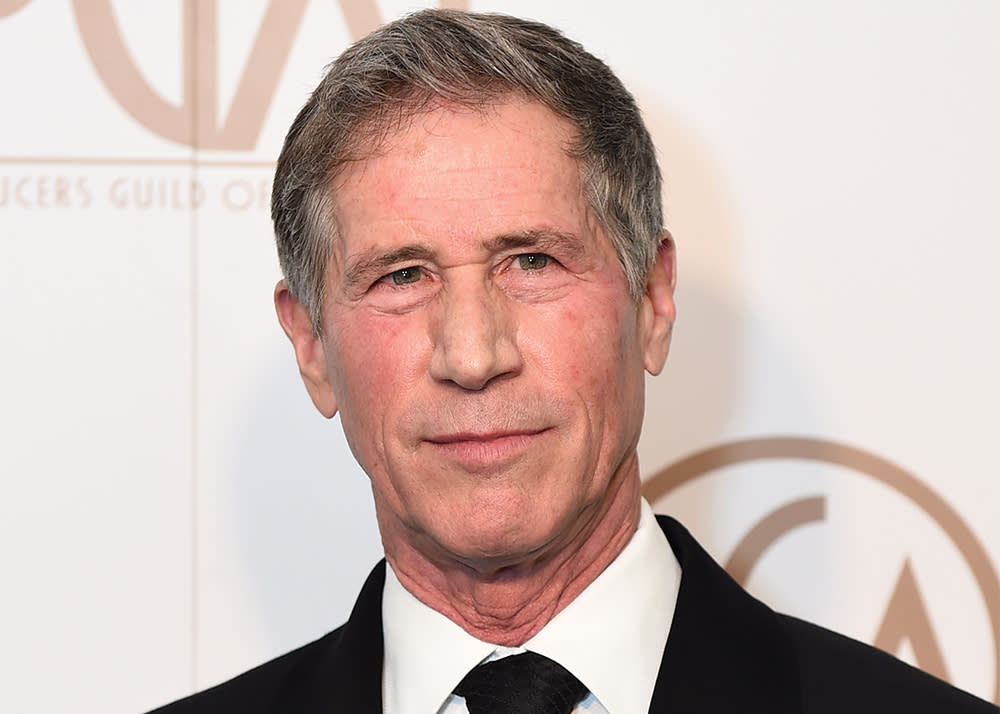
LIONSGATE
Jon Feltheimer, CEO
2020 Feltheimer compensation: $11.01M/+67.4%
Michael Burns, Vice Chairman
2020 Burns compensation: $6.4M/+23.1%
Media Employee Compensation: $115,604
Feltheimer/Burns Pay Ratio to Media Employee: 96/55
2019 Total Shareholder Return: -61.1%
Board: 9 Men/4 Women
Average Age of Board Members: 61
Lionsgate’s fiscal year ended in March 2020 as COVID-19 was upending the landscape. But the board left Jon Feltheimer and Michael Burns fortified as the pandemic tightened its grip. Feltheimer’s compensation nearly doubled, rising from $6.6 million to just over $11 million, while Burns’ increased by nearly 25%. That’s to say nothing of $52,239 in club membership dues, $7,200 in security service costs and $110,116 in incremental costs for the personal use of the company-leased aircraft for which Feltheimer stuck shareholders with the bill, while Burns racked up $28,225 in private-jet fees.
Most of the pair’s pay packages came in the form of bonuses, with Feltheimer earning $6.3 million and Burns netting just over $3 million. That bonus has been the subject of criticism, which Lionsgate acknowledges in public filings, noting, “Mr. Feltheimer’s target bonus is over 400% of his base salary and higher than the median annual incentive award opportunity of CEOs in the Company’s peer group.” But the compensation committee countered that the incentives were justified because the Lionsgate chief ’s “base salary (of $1.5 million) is only slightly above the 25th percentile of CEOs.” Because Lionsgate’s fiscal year unfolded largely in 2019, our chart does not reflect the 146% improvement in the stock’s 2020 performance.
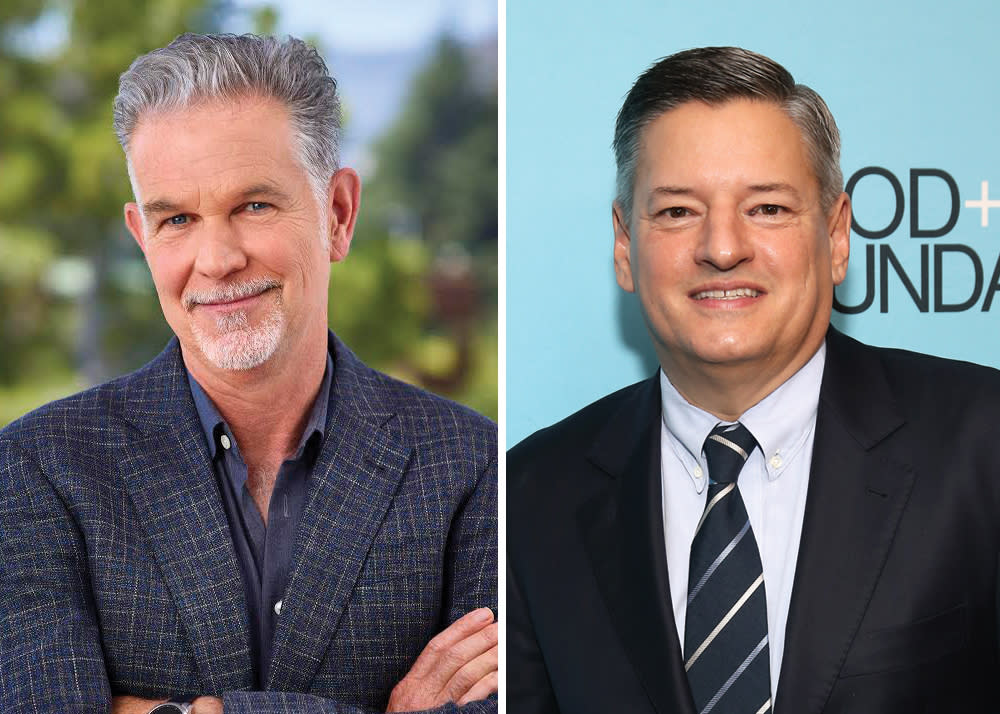
NETFLIX
Reed Hastings, Co-CEO
2020 compensation: $43.2M/12.1%
Ted Sarandos, Co-CEO
2020 compensation: $39.3M/13.4%
Media Employee Compensation: $219,577
Hastings/Sarandos Pay Ratio to Media Employee: 197/179
2020 Total Shareholder Return: +67.0%
Board: 9 Men/3 Women
Average Age of Board Members: 59
It was a good year for Netflix, which was the rare media company to see its business model benefit from a pandemic that left much of the population homebound and desperate to be entertained. Watercooler hits such as “The Queen’s Gambit” and “Bridgerton” helped the company add a record 37 million new paying subscribers to its ranks. But Netflix also must deal with added competition from new streaming services like Disney Plus and HBO Max.
Netflix approaches compensation differently from its peers, giving its executives a mixture of cash and fully vested stock options. Other entertainment players reward their teams with a blend of salary, stock grants, non-stock bonuses and options. In the past, that’s led to shareholder dissatisfaction, with a mere 49.8% of shareholders approving the 2019 Say on Pay vote. However, Netflix assuaged some concerns, giving more insight into how these options are awarded and why it maintains its system works. That led more than 60% of shareholders to vote their approval in 2020.
Reed Hastings draws only $650,000 in salary, while a massive $42.4 million of his pay package comes from options. Additionally, public filings reveal that he profited handsomely from the streamer’s surging share price, exercising $612 million in options during the past year. Ted Sarandos’ compensation package is structured differently, with $20 million coming in the form of salary and an additional $18.3 million coming from options. His package also included nearly $1 million in residential security costs, while Hastings racked up $147,146 in use of the company’s private plane.
Even as COVID raged, Netflix’s brass opted not to forgo salary or bonuses, as the compensation committee “determined not to make any changes to executive compensation for 2021.”

VIACOMCBS
Robert Bakish, President, CEO
2020 Bakish compensation: $39.0M/6.6%
(based on estimated 2019 pay figure)
Media Employee Compensation: $94,989
Bakish Pay Ratio to Media Employee: 411
2020 Total Shareholder Return: -8.5%
Board: 6 Men/7 Women
Average Age of Board Members: 64
Few works of literature offer as many surprises as a proxy with the name “Viacom” or “CBS” on it. And the latest from ViacomCBS is a worthy sequel — even if it doesn’t amaze as much as last year’s $125.4 million payout to then-CEO Joseph Ianniello, whom directors believed they couldn’t live without, until they decided it was time for him to go.
Let’s start with the board’s conclusion that “despite the challenges presented by the COVID-19 pandemic, social unrest in the U.S. and the unanticipated shift to remote work,” the first year after the Dec. 4, 2019, merger of Viacom and CBS “was a success.”
That’s an odd way to describe a year when net earnings dropped 26.8% and employment fell by 1,880, or 8%.
Executives set up a $100 million relief fund for displaced workers — just $17 million more than the total compensation for its six highest-paid executives.
Indeed, the board says it didn’t change its 2020 compensation “to account for the impact of the COVID-19 global pandemic.”
That positions Robert Bakish to rank among 2020’s highest-paid media chiefs: He saw a 6.6% boost in his full year as CEO compared with the 2019 pay figure the company estimated he received from 11 months running Viacom plus one month at ViacomCBS.
The board gave him a $19.7 million bonus for 2020 — 59% above his target of $12.4 million. Directors said the company achieved 133% of its financial goals after “taking into account items … that may otherwise distort the calculation.” In addition, Bakish hit 150% of his subjective qualitative goals.
Directors further boosted his grand total with a 115% “individual multiplier.”
It would take an average ViacomCBS employee in the U.S. 411 years to earn what Bakish made in 2020, up from 349 years in 2019.
ViacomCBS has the only majority female board in our group. At year end, women accounted for 49% of the company’s U.S. workforce, and 48% of those who ranked vice president or higher. Self-identified racial and ethnic minorities were 37% of the workforce and 26% of the upper echelon.
Notes:
Most of the information in this story comes from the proxy statements and reports that the Securities and Exchange Commission requires publicly traded U.S. companies to file each year. Overseas companies such as Sony, and privately held ones such as MGM, do not file and are not included in our tally. The SEC filing requirements are designed to help people compare information from different companies. There are some caveats: Companies file reports for their fiscal years. Most coincide with the calendar year, but several do not: Lionsgate’s fiscal year ends in March, Fox’s ends in June and Disney’s ends in September. Our data is from their most recent annual filings.
Our data about the composition and ages of company boards also reflects the information included in the latest proxy statements.
The SEC requires companies to disclose a median employee compensation figure, along with a ratio derived from that total paid to the principal executive officer. Companies calculate the medians differently, so they aren’t comparable.
Our list focuses on CEOs but also key decision-makers — especially those overseeing content production.
David Lieberman is an associate professor in the graduate Media Management program at The New School. Xinran Qi contributed to this report.
Subscribe to Variety Newsletters and Email Alerts!
